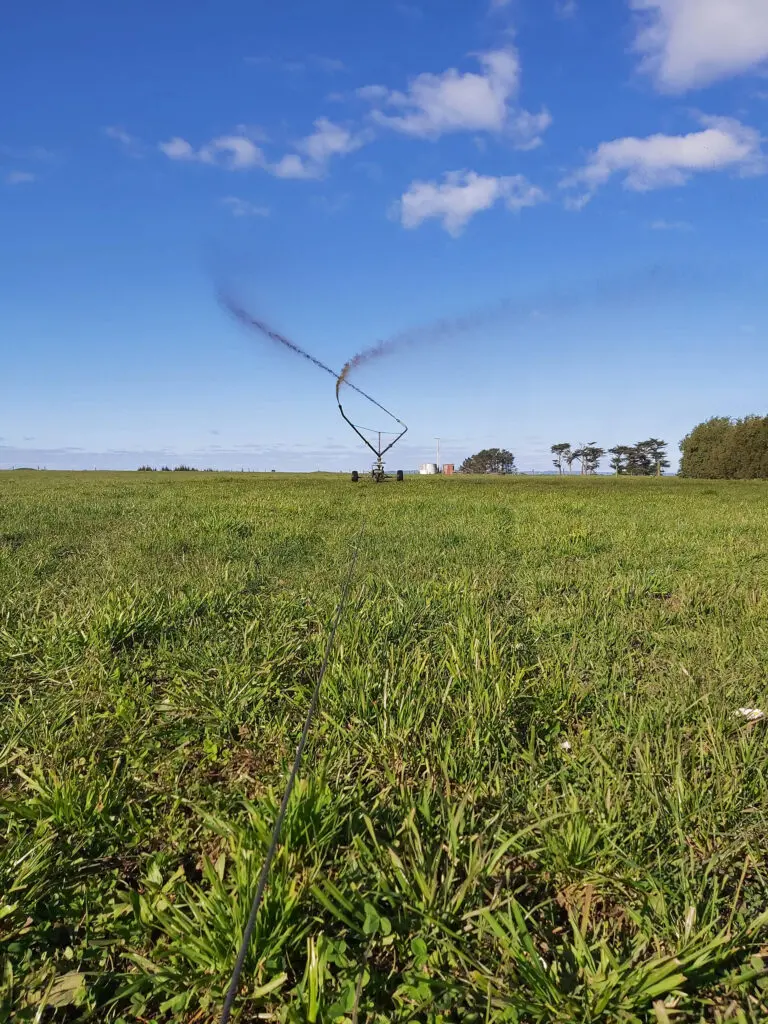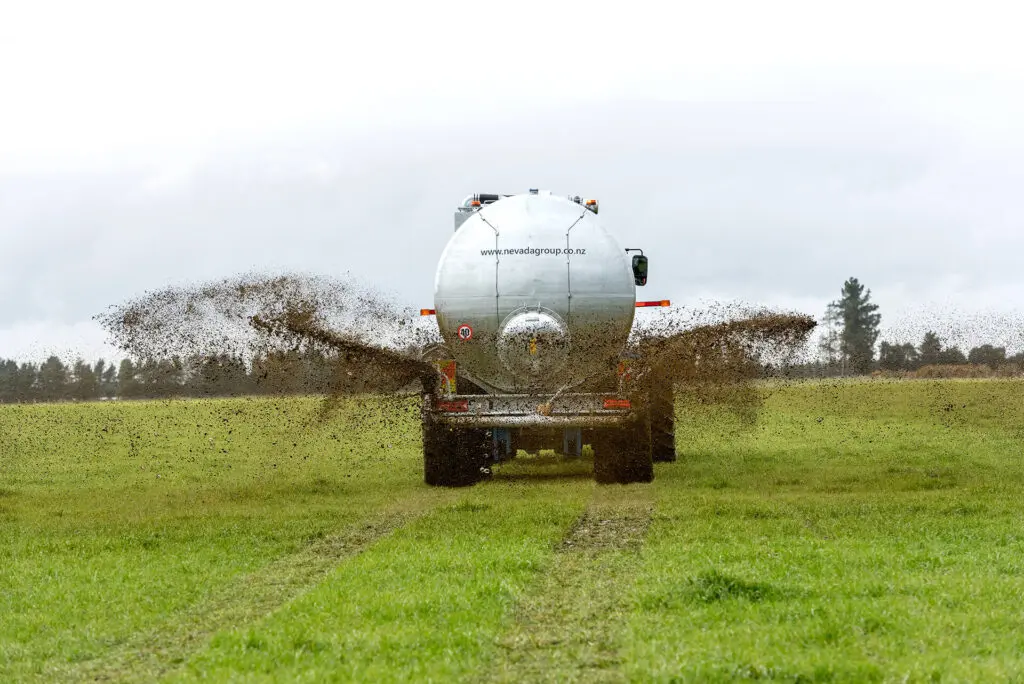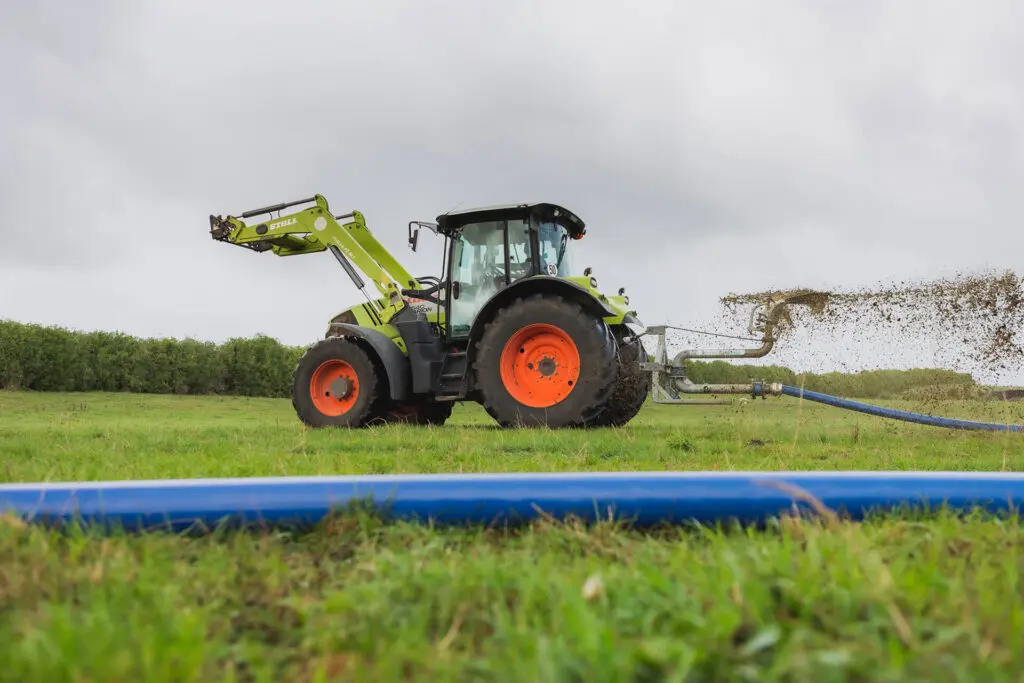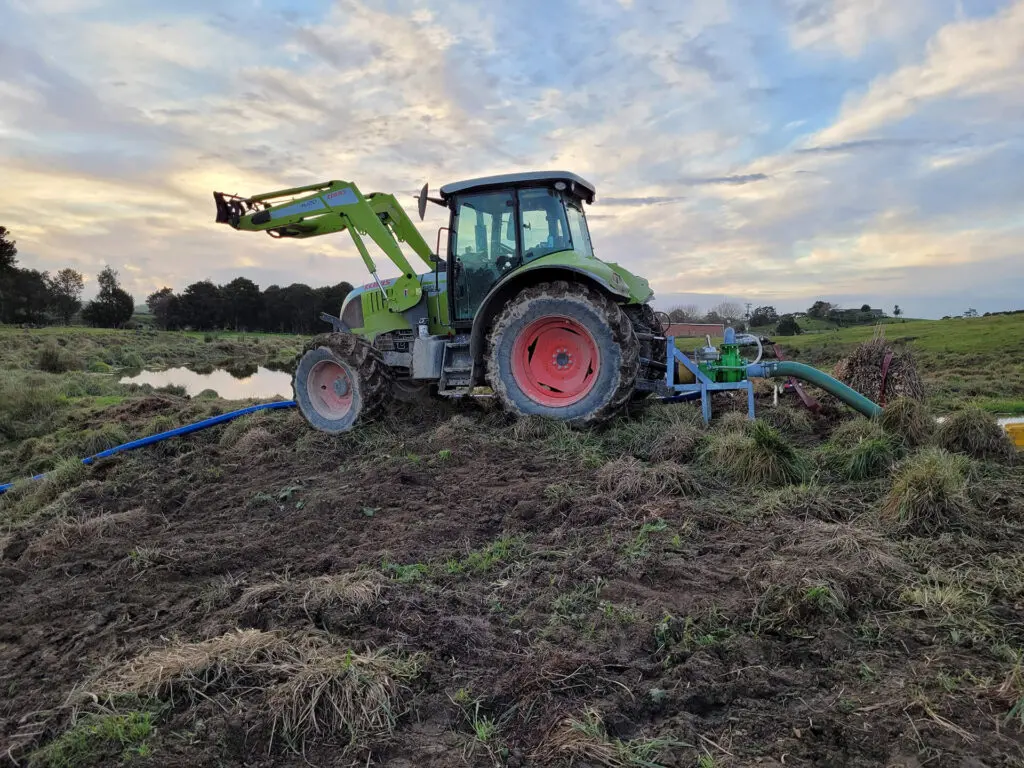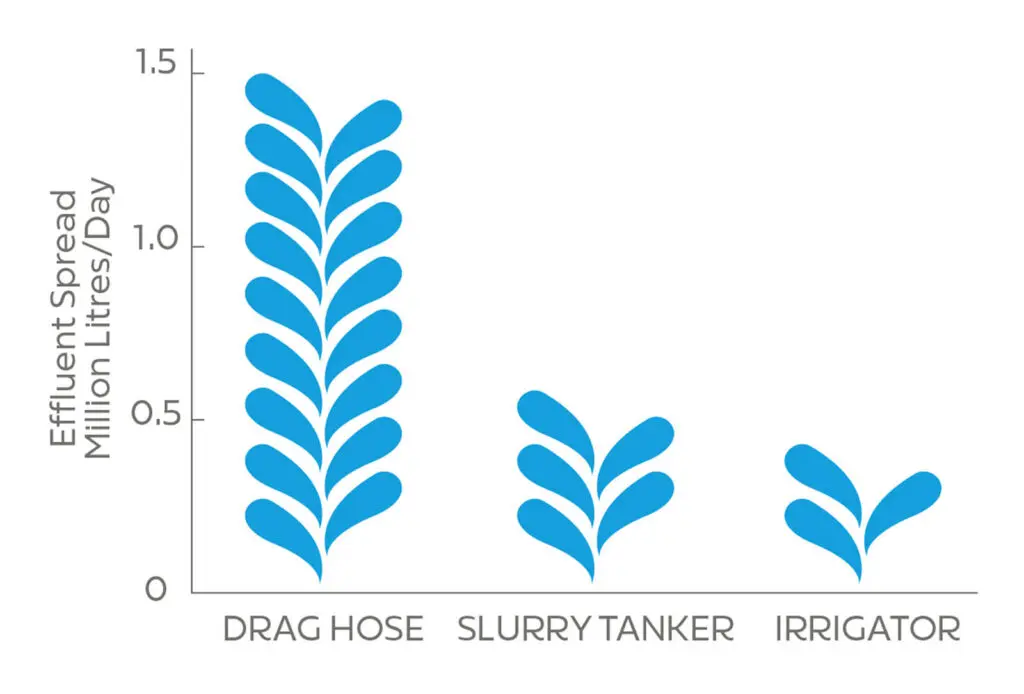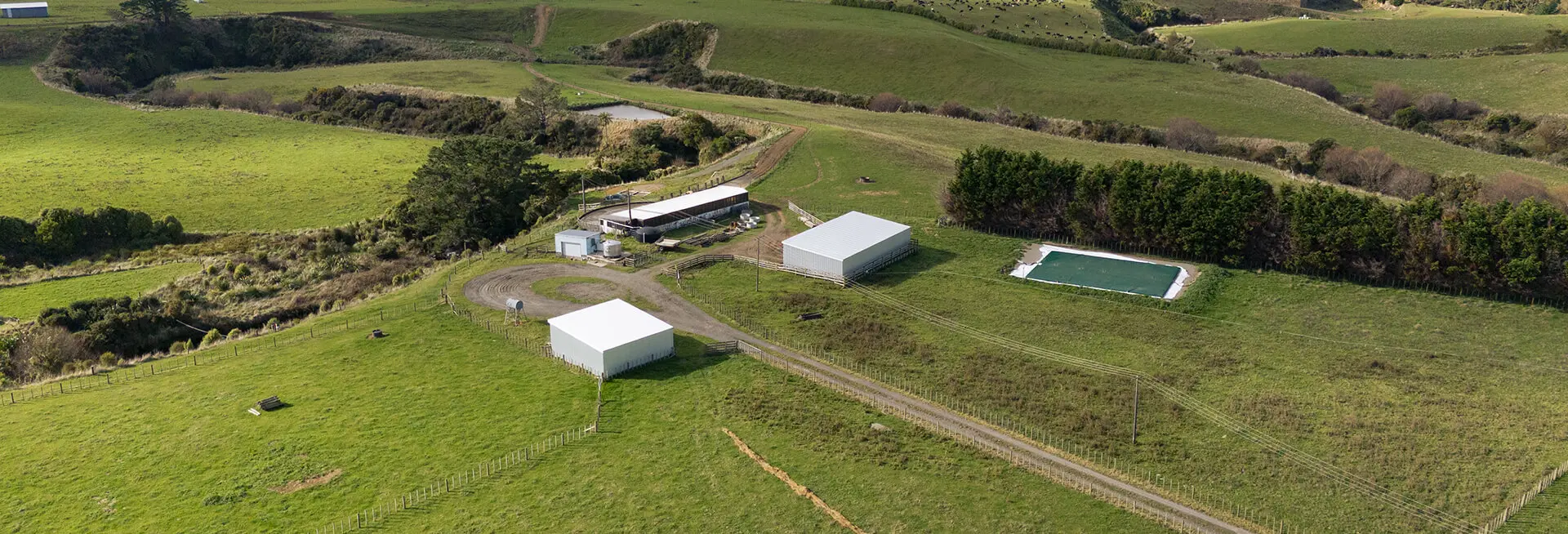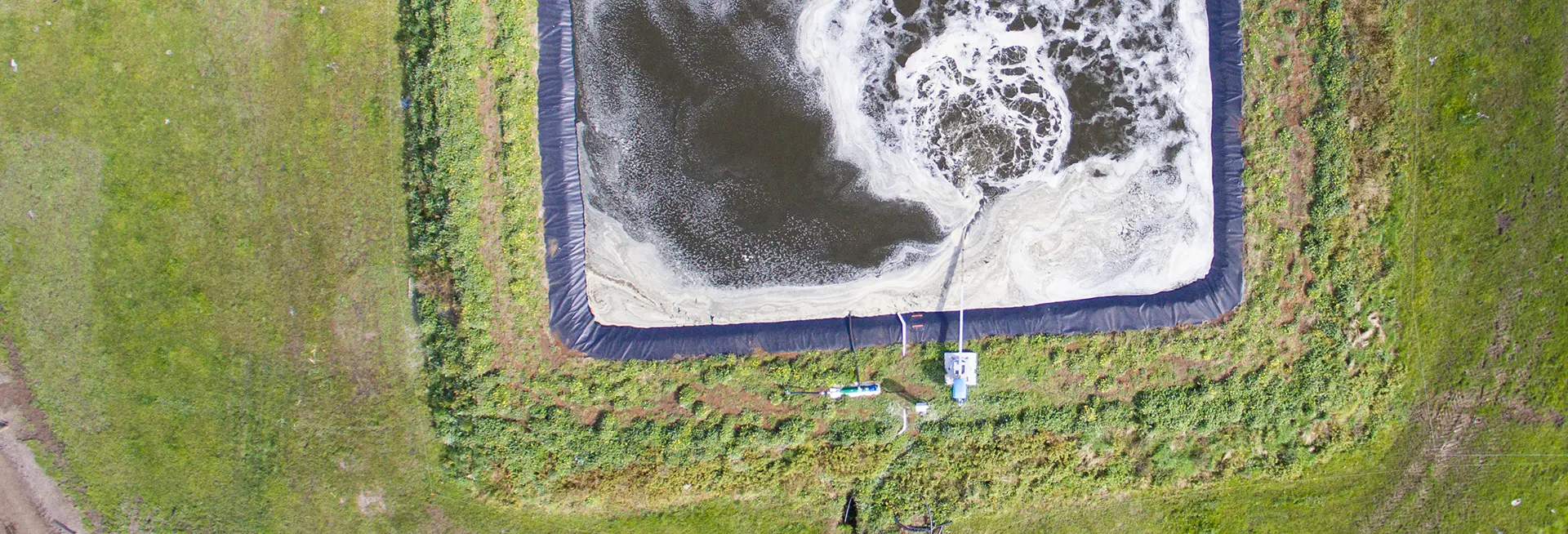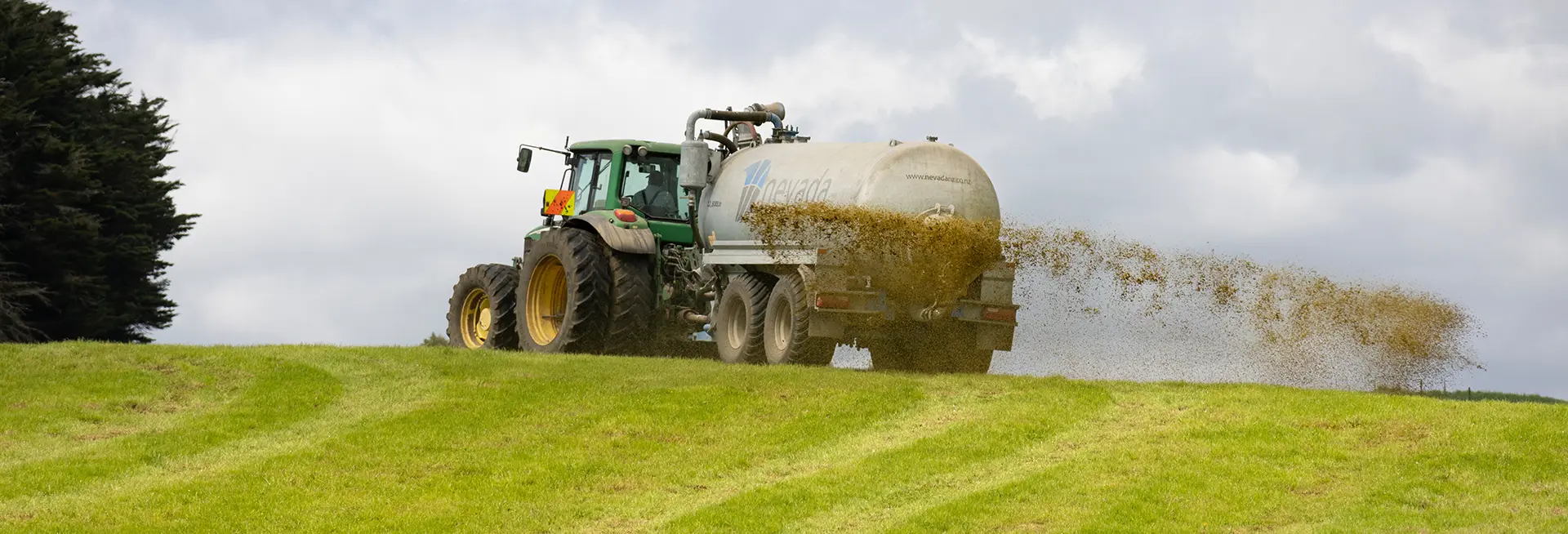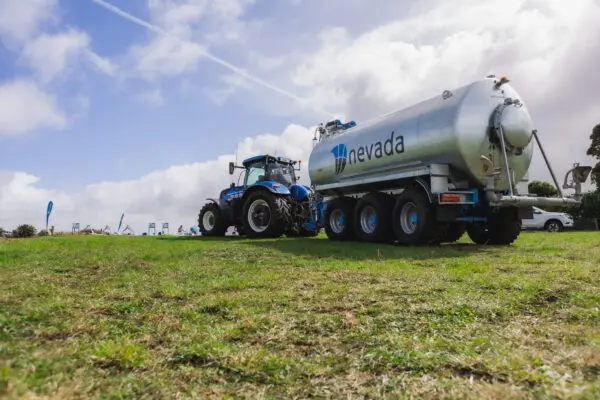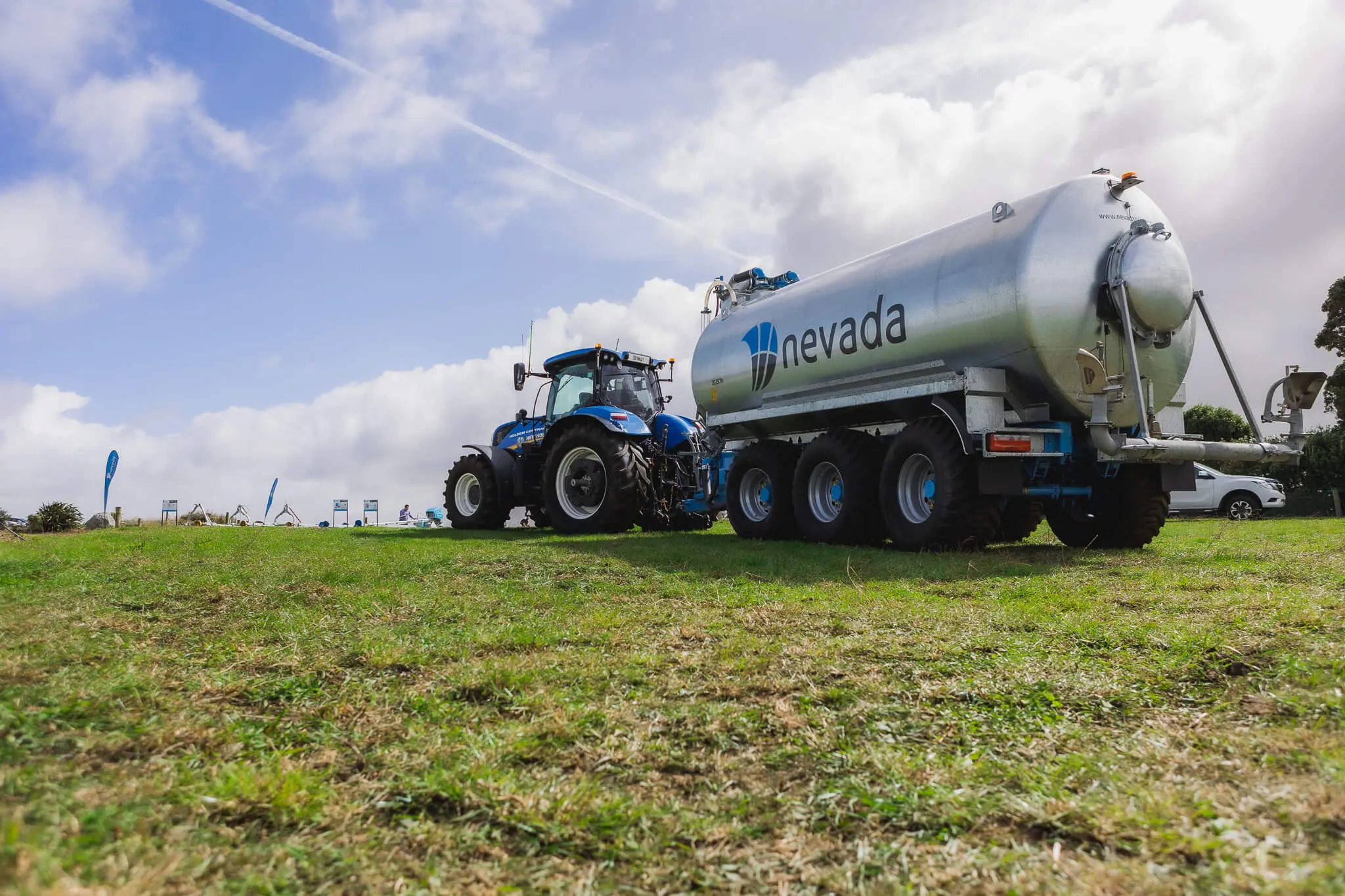The traditional method utilises an electric pump with a travelling irrigator, but there are other methods that could increase reach and efficiency. With many farms under utilising paddocks, equipment such as slurry tankers and hose reelers have the potential to spread effluent faster with less hassle.
Travelling Irrigator
Travelling irrigators are generally run through a fixed in-ground mainline, which can restrict the number of paddocks that effluent is applied to. The closer paddocks can max out at around 45,000 litres per hour, while the further away paddocks could experience pressure loss on the line and come down to a max of around 35,000 litres an hour.
Travelling irrigators do require a more involved set up process, but once started, there is minimal work. It can take around 45 minutes to an hour to set up, including the time it takes to lay out the drag hose correctly.
With a travelling irrigator system, most farms only utilise their valuable dairy effluent on 10-15% of their farm land. Under utilising effluent reach puts more pressure on herd rotation, which can lead to over application that affects animal health, as well as problems with higher nutrient loading. A travelling irrigator can spread effluent at a reasonable speed, but if the farm only spreading on a small number of paddocks (10-15% of total number of paddocks), effluent should not be applied too close to the next rotation.
Slurry Tanker
Slurry tankers are the second most efficient method for spreading effluent quickly after the drag hose system, however, they are the best-in-class for being able to spread the valuable nutrients over the entire farm, bringing the biggest return on investment. But it is important to have the right size slurry tanker based on the tractor available and the farm topography. Often, too small of a slurry tanker is being implemented, which greatly impacts efficiency on the amount of volume spread in a day.
It is more efficient to implement a larger slurry tanker to ensure more capacity in less loads. Slurry tankers are fast to set up in only five minutes. A hydraulic auto-fill arm takes the work out of manually moving hoses and couplings onto the tanker, making it a hassle free process. The filling station is already at the pond, which makes it simple to drive up to the pond, drop the auto-fill loading arm, fill up the tanker, and drive to the paddock to spread.
Drag Hose System
A hose reeler, also known as an umbilical or drag hose system, is a method of applying effluent that can be the most efficient method for spreading once it is set up. Set up can take two to three hours, depending on the amount of hose being unreeled. Unless the system includes a motorised pump, a hose reeler system does require the use of two tractors. One tractor is used on the paddock to apply effluent with an applicator, such as a RainWaveTM, while the other tractor is back at the pond or storage facility utilising a large volume PTO pump. Once set up, it is the fastest method of transporting effluent from the storage facility to the paddock. The volume of effluent spread with a drag hose system can be up to around 1,500,000 litres per day. Making this the fastest and most efficient way to spread effluent, however, the limitations are the length of drag hose available, restricting the system from reaching the further away paddocks.
What is the most efficient way of spreading effluent?
The most efficient way of spreading effluent can depend on your farm, however, the fastest method once set up is the drag hose system.
Slurry tankers can offer more flexibility, but are not quite as efficient for maximising the amount of effluent that is able to be spread in a day. Typically a hose reeler offers a two day job where effluent can easily be applied at high volumes.
A slurry tanker can easily follow a cow herd rotation. Talk to our team to learn more about the most efficient effluent spreading method for your farm, to maximise the return from these valuable nutrients.
